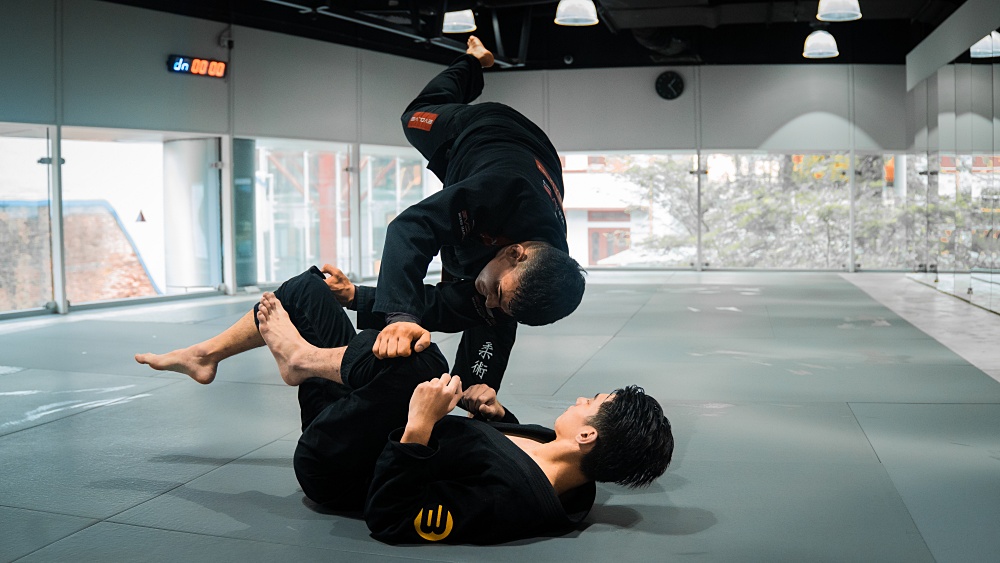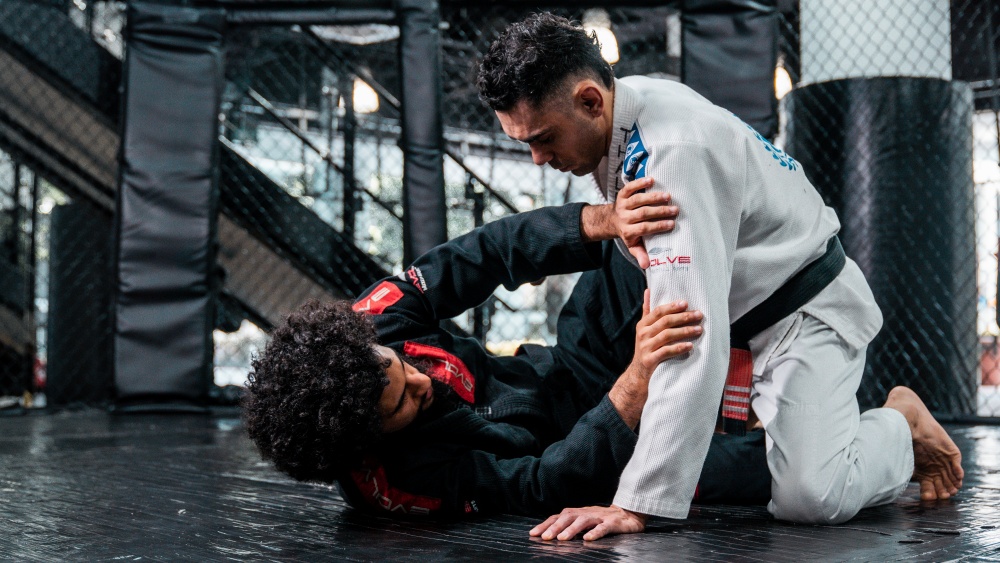The art of guard passing is one of the cornerstones in mastering Brazilian Jiu-Jitsu. The ability to bypass the opponent’s defenses is always a useful skill. It allows you to advance your position and force the opponent to go on the defensive. As practitioners progress in ability, learning the most important guard passes becomes a necessary part of learning. Today, we’ll review a classic technique to pass the guard – the ever-reliable X-Pass.
Before we define the actual technique, let’s go over the definition of passing the guard. To pass the guard means to bypass the opponent’s defenses, namely their legs and frames. Passing the guard opens opportunities for pinning techniques such as side control, mount, and north-south. It also gives the passer the chance to transition to various submissions that become available.
As BJJ practitioners, we are taught the value of playing the guard, so much so that it is taught in the first week of class. The closed guard is a basic example of a guard we learn early on. Regardless of type, the guard teaches the value of using your legs as a barrier to defend against an advancing opponent. To successfully defend against a strong guard passer means you take away their ability to attack, thus keeping you safe.
This means that as the guard passer, learning to break through common guards is a critical skill regardless of rank. The X-pass is a technique that has been used for decades and is a recommended passing technique to learn in the first few years of training.
Mechanics Of The X-Pass
The X-pass is named after the cross “X” configuration of your arms and legs during the execution of the technique. At its very core, the X-pass is a standing pass that requires timing, agility, and an understanding of your opponent’s reactions. The objective is to bypass the opponent’s legs by creating an angle and using your limbs to manipulate their legs out of the way. If you are familiar with the bullfighter or toreando pass, it is similar in setup, but the execution is a little different.
X-Pass In Action
In this video, black belt competitor Renato Migliaccio shares the mechanics of the X-pass. He mentions that to him, the X-pass is a variation of the toreando pass and shares many mechanical similarities. He starts the technique by pushing the opponent to their back, forcing them supine. He likes to place his right hand near the opponent’s hip as he grabs the opponent’s pants using his left. Next, he kicks his leg out, pushing the opponent’s leg to his left. Doing this will open some space for him to move to the side. From here, he likes to finish the pass by going to knee on belly.
What’s good about the X-pass is that it is a very simple technique with only a few steps to remember. Renato suggests practicing the guard pass on both sides; you can even include it as part of your conditioning drills.
X-Pass To Back Take (Single Strap Variation)
Another great benefit of the X-pass is that it easily links to other attacking sequences, such as the back take. In this video, we study a simple transition to the back from the X-pass. It starts by first establishing collar control at the onset. Get into your preferred guard passing sequence; it can be from headquarters or any position where you can maintain the collar grip as you pass. From here, pass the guard and force the opponent to choose between 2 options: get passed or go to turtle. You can easily get the side control pin if the opponent does not go to turtle. If the opponent turtles, you can now take the back since you have the collar controlled. This is a shockingly effective sequence and is effective at all levels.
Adding The X-Pass To Your Game
If you are interested in adding the X-pass to your guard passing sequence, it is a must to first drill the technique. Many beginners get confused with the toreando and X-Pass as they start from more or less the same position. It is always a good idea to isolate new techniques and drill them until you understand the nuance of all their steps. In the case of the X-Pass, studying the initial approach to the finish of the pass is critical because you need to have the proper body position at all times.
Create small combinations of techniques from your initial passing position, and you should be able to effectively use the X-Pass in conjunction with your other passing techniques. What’s important here is that you can systematically shift from one position to the next depending on your opponent’s reactions. This means that the passing techniques you should choose are more or less similar in terms of gripping mechanics and primary position. Moves like the aforementioned toreando pass, throw by, knee cut, and other standing techniques are great options.
Lastly, be open to feedback from your coach and training partners, especially about your application of the X-Pass. Oftentimes, we don’t see the whole picture, and little mistakes get ignored. By asking for honest feedback from your coach and the people you roll with, you can access objective information that will surely help you improve your performance on the mats. Please keep an open mind, and do not get offended by whatever feedback they give you.
Conclusion
The X-pass is a powerful tool in the arsenal of any BJJ practitioner. It combines principles of leverage, timing, and movement to effectively bypass an opponent’s guard. While it may seem complex initially, with diligent practice, the X-pass should become a smooth and intuitive part of your game. Remember that the key to mastering the X-pass, as with any technique, lies in understanding the mechanics, committing to the movement, and applying it with confidence during sparring. With these elements in place, the X-pass can elevate your guard passing game to new heights.
You may also like:
What You Should Know About Foot Sweeps In BJJ

















